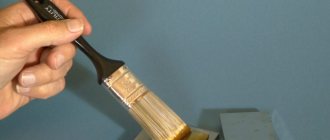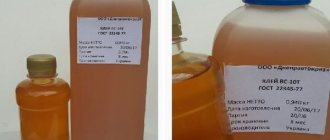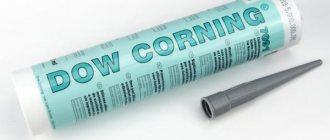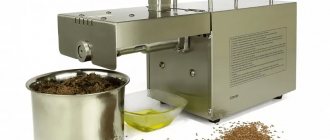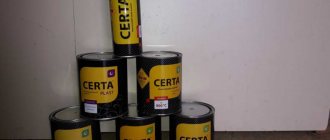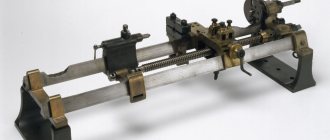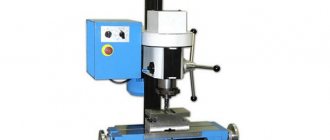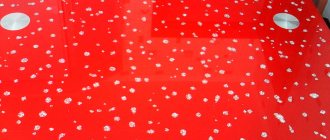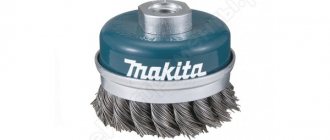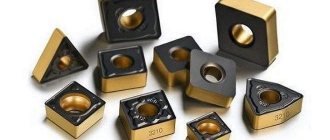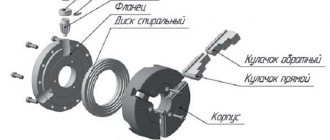I collected this material myself personally and several other people helped me with this. It will be useful to everyone. Those who repair, those who want to and are engaged in tuning, or simply masters of their craft ;) Everything that is indicated here has found application in personal experience. I suggest adding your experience in the comments and creating a useful topic for everyone!
Adhesives and adhesives
1.Dichloroethane
Dissolved plastic (from CDDVD boxes) in dichloroethane is fragile and does not glue very well (although it depends on the plastic you are gluing, it can be resistant to dichloroethane. Some plastics glue normally. Metal is useless. Color: transparent
2. Glue gun (polyethylene tubes).
Pros: Glues plastic and sticks metal quite well. You can melt it and give it some kind of design. Cons: due to elasticity, the insides become loose over time if they are constantly impacted. Color: Adhesive sticks are available in almost any color. Comment on use, Grawer: “I finally checked the heat gun, which I bought a long time ago, but there was no work for it. And then the butterfly on my daughter’s hair clip fell off. An examination showed that it was held in place by hot glue. After removing the remnants of the old glue, I degreased the parts with alcohol. I warmed up the gun and squeezed a drop of glue onto the joint. I connected the parts and nothing stuck; the glue had time to cool. The second time I moved faster and everything worked out great. The glue is supplied in cylinders according to the size of the gun firebox. It comes in different colors (I saw amber and black on sale), translucent (transparent when melted). The gun works on the principle of a syringe; the heated glue is squeezed out of the firebox by the cold part of the glue cylinder.”
3.Glue "Titan"
Pros: Adheses soft materials well, flowable, dries quickly enough Cons: elastic. Color:transparent
4. Glue-gel “Moment”
Pros: it holds everything together well, much better than simple “Super Glue.” It can glue porous materials. Well suited for fixing parts. Cons: fumes, sticks fingers together (work with gloves) Color: transparent examples of work: 1
5. "Primer 3M"
An adhesive liquid to enhance the adhesion of vinyl film (any brand of film) to any surface at joints and corners. Pros: it really sticks the film well and confidently in places where without it it would usually peel off over time. Cons: after applying the adhesive liquid (using a brush), the film must be glued immediately in place (cannot be peeled off or moved), it dries quickly. Color: transparent caramel white
6. “Moment installation” (liquid nails).
Pros: there is a lot of it, it glues: wood, metal, some types of plastic, pfh, after drying you can edit the surface Cons: sticks to your hands, takes a very long time to dry (if you apply a large layer), useless where there are any dynamic loads on the adhesive layer (tension, twisting) - crumbles and cracks. My conclusion: not at all suitable for modding, and in general the thing is purely for construction Color: dark yellow
7. Shoe glue Moment “Marathon”
The glue is similar in its basis to ordinary glue, it perfectly glues leatherette to wood and plastic. The smell practically disappears within a day. The connection is elastic, but quite stable with minor deformation. It is not expensive. Cons: there is very little of it in the tube. Color: light yellow
8. Glue “Moment Crystal”
The adhesive base is a little thicker than regular instant. Glues leatherette, wood, plastic. The connection is elastic, but quite stable with slight deformation. Color:transparent
9. Cyanoacrylate adhesives:
liquid composition - “Cosmofen”, “Zenovild” thick composition - “Super Moment” (tubes of 50-100 g) Glues plastic, polymerizes within 24 hours, sets immediately. Gives slight shrinkage. The plastic melts, causing diffusion of the materials being bonded. The vapors of this glue can also melt the plastic; there is a coating in the bonding areas that does not wash off. But the main thing is that it holds very firmly. All advertising companies work with them. Precautions: the glue is dangerous and toxic, work only in a ventilated area, avoid contact with skin. You can’t work with gloves; it doesn’t work well with fabric; it heats up very quickly at the point of contact.
10.PVA glue
The composition of the glue resembles kefir, milky white in color (sometimes translucent). It glues wood, paper, cardboard. It dries within 10-15 minutes.
11.glue Moment “Plastic”
The transparent, somewhat stretchy plastic adheres well. Glues polystyrene, polyurethane, hard and soft PVC.
12.Confiad glue (acrylic resin)
two-component, designed for gluing artificial stone, but practice has shown that it can glue both wood and plastic, it does not hold metal or glass! Pros: includes a special mixer for mixing two components / is quite durable Cons, it is most convenient to work with a special gun (costs almost 5000) can crack if exposed to strong heat / temperature changes / toxic
13. Two-component adhesive Plexus A420
A two-component methacrylate adhesive designed for the structural bonding of thermoplastic, metal and composite parts. Bonds: Aluminum, sheet metal, painted metal, cold rolled steel, stainless steel, ABS plastic, acrylic sheets, polyester (polyester), vinyl (PVC), polyurethane, fiberglass, gelcoats, SMC (roughly thermoplastics), phenolic resins, laminate. Used among professionals for gluing fiberglass and metal. You need a special gun and a mixer attachment.
14.Super glue + baking soda
Don’t be surprised, this component was not included in this list by chance. Using this double substance, you can reliably fasten plastic to plastic. Let's say the bumper mount has come off. You should degrease, clean and glue the two parts with super glue, then sprinkle with a small layer of soda and again apply a layer of glue, saturating the entire surface with it. According to reviews, this gluing is much stronger than any other glue, including epoxy resins and glue guns. The same composition can also be attributed to the group “epoxy compounds and cold welding”.
15.PowerPlast
The commercial equivalent is “super glue + baking soda.” The same thing, but in convenient packaging and 1000% more expensive.
16.LOCTITE 406
A more expensive analogue of “super glue” that can withstand temperatures from -40 to 120 degrees.
Epoxy compounds and “cold welding”
1.Epoxy resin
Pros: Connects well large surfaces of various materials, among themselves and in various combinations with each other. Can be sanded. Cons: takes a long time to dry, does not connect thin elements well, is difficult to shape. Comment on use, Grawer: Epoxy is also an excellent thing, the connection is very strong, like the hardened resin itself, it’s better to clean up smudges right away, then it’s difficult. You can also “boil” it with shavings, including metal or cement, and the result will be very strong. There is a way to dry it very quickly, just heat the finished composition, then it hardens even if it is mixed incorrectly. If you do not add enough hardener, the hardened resin will be softer, but a sticky effect may also appear. If you overfill the hardener, it will become more brittle. I mix 1 to 10. Read more here
2. Adhesive-cold welding “Poxipol” (Poxipol).
Pros: Dries quickly, connects different surfaces to each other. Can be sanded (sanded) Cons: The connection is fragile, a little elastic, the price is high. Color: transparent, can be painted in any color (when mixing two components)
3.”HI-GEAR Flexoplast”
Pros: Cold welding for plastic, kneads well, like plasticine, sticks to a damp, oily surface, in addition to plastic (written in the instructions), it glues glass, wood, ceramics, metal. Sets in 5 minutes, polymerizes in 15 minutes, hardens in 1 hour Cons : sometimes peels and cracks under loads. Color: light blue examples of work: 1
Messages [ 1 to 25 of 28 ] 882
1 Topic by VladiZ 01/08/2017 13:02:00 (2 years 9 months ago)
- VladiZ
- Local
- Topic author
- Inactive
- From: Barnaul
- Experience: 8 years 1 month
- Messages: 5 334
- Reputation: [ 92 | 3]
Topic: What kind of glue is used to “tightly” glue metal to plastic?
Subject There will be frequent loading (moving here and there), the contact area is not very large. so all sorts of moments will not work. Tell me, what can I buy in a store that is more serious?
2 Reply from sanya22-96 01/08/2017 13:20:28 (2 years 9 months ago)
- sanya22-96
- Participant
- Inactive
- Experience: 4 years 3 months
- Messages: 575
- Reputation: [ 23 | 0 ]
Re: What kind of glue is used to “tightly” glue metal to plastic?
3 Reply from barbarian 01/08/2017 13:23:53 (2 years 9 months ago)
- barbarian
- Participant
- Inactive
- From: Barnaul
- Experience: 9 years 4 months
- Messages: 3 586
Re: What kind of glue is used to “tightly” glue metal to plastic?
what kind of plastic? what metal? thickness? Under what conditions will it be used? no answers - buy a “second” and don’t worry, it will fall off anyway.
4 Reply from VladiZ 01/08/2017 13:26:05 (2 years 9 months ago)
- VladiZ
- Local
- Topic author
- Inactive
- From: Barnaul
- Experience: 8 years 1 month
- Messages: 5 334
- Reputation: [ 92 | 3]
The best superglue for plastic
The most popular method for gluing broken parts or assembling miniature models is superglue. The name itself speaks of the extraordinary speed of gluing and high strength of the connection. Among the huge variety of small tubes, experts have identified several products.
4 Henkel Super Moment Maxi
Henkel Super Moment Maxi
Instant bonding of plastic and plastic is appreciated by professionals. Not every glue can cope with this task, but the Henkel Super Moment Maxi product is suitable for solving the most difficult problems. It not only sets quickly, but also firmly connects different materials. In addition to polymer parts, the composition can glue metal, cardboard, ceramics and porcelain. The manufacturer has made soft, convenient packaging and an elongated tube spout. This made it possible to apply glue accurately and economically, without the craftsman’s hands being in the solution. The cap is easy to remove, and when closed it prevents air from getting inside the tube.
Experts note the instant setting of superglue, reasonable price and convenient bottle. The product qualitatively combines a wide range of materials, which attracts the attention of professionals. The disadvantage of the product is that it is of Russian origin, which is why its quality is not always stable.
3 Superglue POWER
Superglue POWER
High-quality superglue SILA is sold on the domestic market at an affordable price. At the same time, the composition firmly glues plastic, plastic, porcelain, glass, leather and wood. Thanks to the convenient tube, the required amount of glue can be accurately applied to the surface of the part. This has a positive effect on consumption. Experts note that there is no spreading; the gel does not drip onto other objects or hands. The basis of the product is ethyl cyanoacrylate, to which thickeners are added. After drying, the adhesive seam becomes transparent, which is important when gluing white or colored materials. The strength of the connection during testing was 175 N.
Users speak flatteringly about the effectiveness of the glue, affordable price, and ease of use. The glue does not have a strong odor and sets within a few seconds. Among the disadvantages, consumers note the insufficient thickness of the gel, as well as the presence of a large number of fakes on the market.
2 Economy Express Universal
Economy Express Universal
Chinese superglue Econ Express Universal has instant action. It is easy to use, sets quickly, and is unpretentious in work. The composition is suitable for gluing plastic and plastic, metal and paper, rubber and porcelain. Experts note the high strength of the adhesive joint; it can withstand a load of 210 N. The use of glue is quite standard, the surface of the parts is cleaned and degreased, applied to one of the parts, and the compression time is 5-60 s.
Users note the low price of the composition, good quality and reliable seam. Even under the influence of water, the glued parts do not separate. Consumers also respond positively to the sealed cap, through which air does not penetrate inside. The disadvantages include a pungent odor, which can give you a headache when working in a small, unventilated room.
1 Permatex Super Glue
Permatex Super Glue
Superglue Permatex Super Glue with a gel-like consistency is characterized by high bonding strength to plastic. During comparative tests, experts from the magazine “Behind the Wheel” recognized it as the winner. The destruction of the adhesive seam occurs under a load of 245 N, which significantly exceeds the performance of competitors. It is also noted that the glue is convenient to use when it is necessary to glue thin parts. The product is recommended for gluing hard-to-reach and vertical surfaces. High bond strength is observed on non-porous plastics.
Users are satisfied with the adhesive strength, speed of setting and ease of use. The seam turns out transparent, and in addition to plastic and resin, you can work with metal, rubber and ceramics. The product is economical in consumption, per 6 sq. cm of surface, one drop of the composition is enough.
How to glue plastic to iron?
On a children's wheelchair, the plastic wheels constantly fall off the metal axle. We tried to glue them with super glue, but to no avail, after a while they fell off again. Is there an adhesive that will firmly glue plastic and metal together?
Author of the publication
Achievement received 09/27/2018
If you use superglue of the “Seconds” type, which is very liquid in consistency, such a connection will be fragile, since when the glue polymerizes, its volume decreases greatly, therefore, the wheel will not hold firmly on the axle. To prevent the volume from decreasing during polymerization, you need to use some kind of filler, for which baking soda is perfect. Among other things, sodium bicarbonate reacts with superglue to form a cement-like substance with some elastic properties.
To glue in this way, it is necessary to degrease the surfaces to be glued with acetone or gasoline. Then dry it well and, having prepared a paste of superglue and baking soda, apply it to the surfaces to be glued.
Unlike gluing with superglue alone, the superglue and baking soda mixture will take a little longer to set. It will be better if the product is not touched for an hour or more - only if you follow these recommendations can you expect that the wheels will not fall off your baby’s car.
The first step is to determine the composition of the plastic. If it is polyethylene (most likely it is), then most of the adhesives used will not help. It is necessary to use: BF-2 or BF-4 or two-component acrylate or epoxy glue. Before using glue, it is necessary to clean the surfaces and degrease them, for example with alcohol. Treat the surface of the metal axle with coarse sandpaper to increase adhesion.
In order to glue iron and plastic together efficiently and reliably, there are many different adhesives, both the well-known “super-glue” or “super-moment” types, and less well-known ones.
Since you have already used super glue, but not successfully, then I can suggest “Cold Welding”, its consistency varies in both solid and liquid form, but the quality and reliability of gluing is the highest of all known adhesives, as indicated for gluing on the package.
I can also recommend “Epoxy” or the full name “Epoxy resin” for reliable gluing of metal and plastic - this is approximately the same as “Cold welding”.
Time-tested “Epoxy resin” is unpretentious in use; when mixing the resin and hardener itself, it is possible to use various fillers, in the form of metal filings or aluminum powder, for greater reliability.
If you are gluing massive objects, for example, plastic panels with iron or wooden sheets, ordinary “construction foam” will help you out; it will glue it securely.
I specifically do not write in detail how to use this or that adhesive composition, in practice, since all this is written on the packages themselves and in the instructions for this adhesive mass.
If it was not possible to glue metal products and plastic ones, then you can do it the old fashioned way, heat the metal and fuse the plastic into the metal product - this will be both strong and reliable.
Source: borodatiyvopros.com
Glue "Marathon"
A very reliable composition, but it is not capable of tightly gluing plastic to metal, especially if these parts are always subject to movement and vibration. It is often used to restore structures in the car interior, but the composition itself is intended for shoe repair. The adhesive mass has a characteristic, memorable odor. It disappears a couple of days after use, provided that the parts that were glued are well ventilated.
Source banapal.ru
How to glue plastic to metal reliably and without leaving marks?
Dear masters, good day!
There is a need to glue a thermoplastic rose to the metal base of the ring. Any glue will not work, as you understand.
Tell me, please, who uses what adhesives for such cases?
There is one more problem - the base for the ring is not smooth, but with a pattern.
Thanks in advance for your answers!
But the almighty Poxypol - no?
